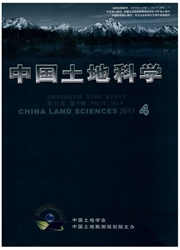

 中文摘要:
中文摘要:
研究目的:通过土地相对绩效更合理地衡量工业土地利用效率。研究方法:利用索洛残差法将上海市工业园区土地绩效中受地理和政策差异影响的部分剔除,得到更具可比性的相对绩效产出指标。研究结果:相对绩效排名和绝对绩效排名具有较大的差异,区位好的工业园区土地利用效率通常被高估,而区位差的工业园区土地利用效率被低估。研究结论:相对绩效能更好地反映工业园区对土地生产潜力的实现情况,以达到土地绩效评估的真正目的。
 英文摘要:
英文摘要:
The purpose of the paper is to measure the industrial land use efficiency more properly by using relative index. Residual Methods created by Solow is used in the case of Shanghai to get comparable relative output index by dislodging the influence from the differences of location and policy. The results indicate that there is a large difference between relative output ranking and absolute output ranking. Industrial areas with location advantage are often overestimated in their land use efficiency, while those with location disadvantage are underestimated. The paper concludes that relative efficiency, which can truly reflect the effort from industrial parks on realizing their potential of production, is much closer to the real purpose of land use efficiency evaluation.
 同期刊论文项目
同期刊论文项目
 同项目期刊论文
同项目期刊论文
 期刊信息
期刊信息
